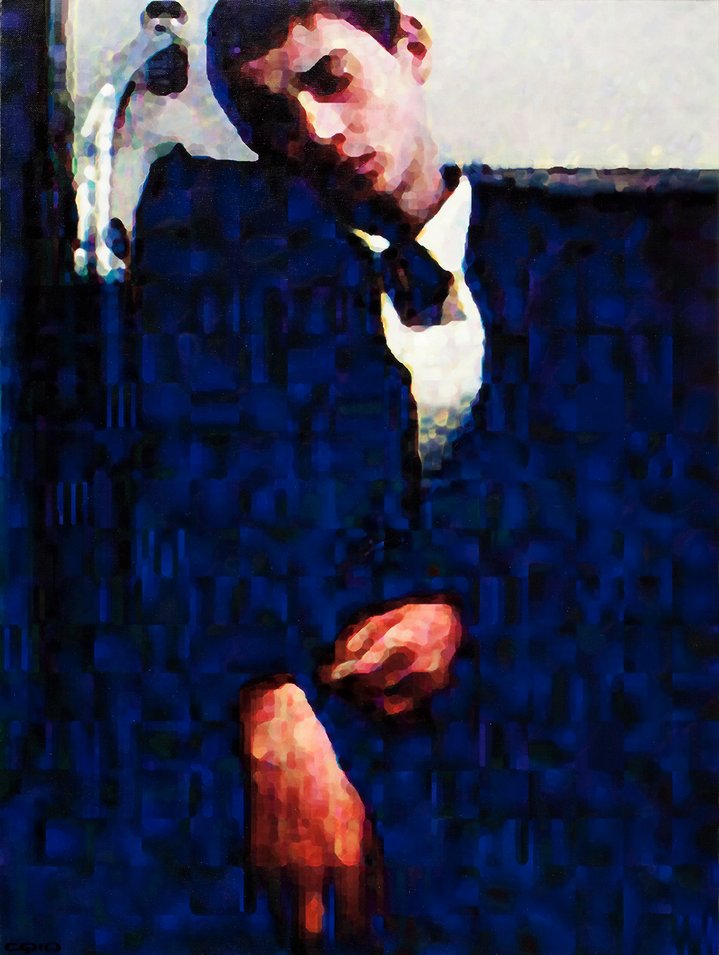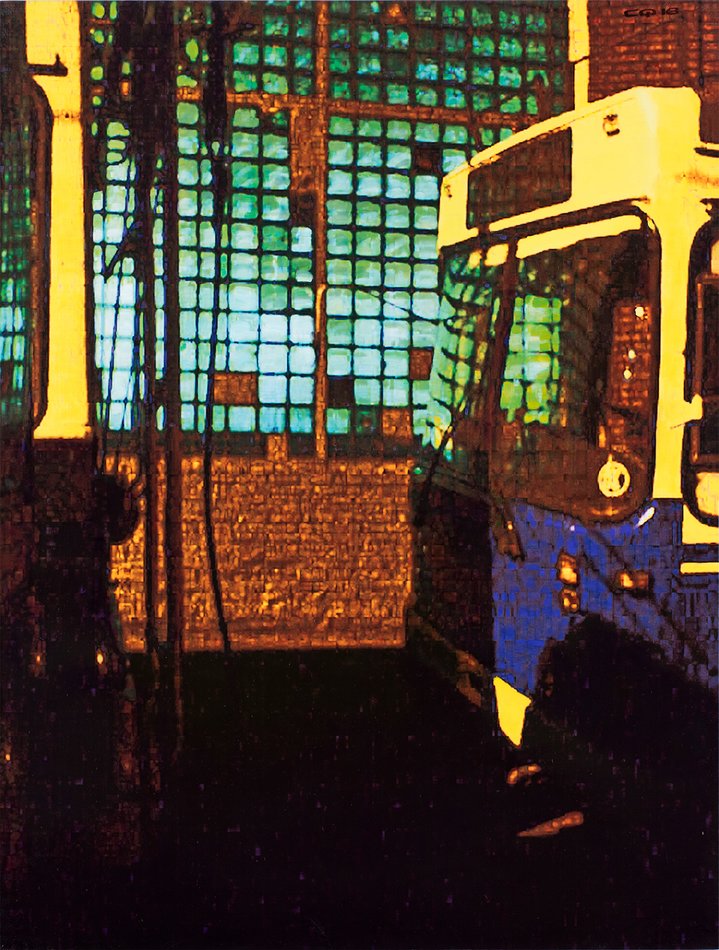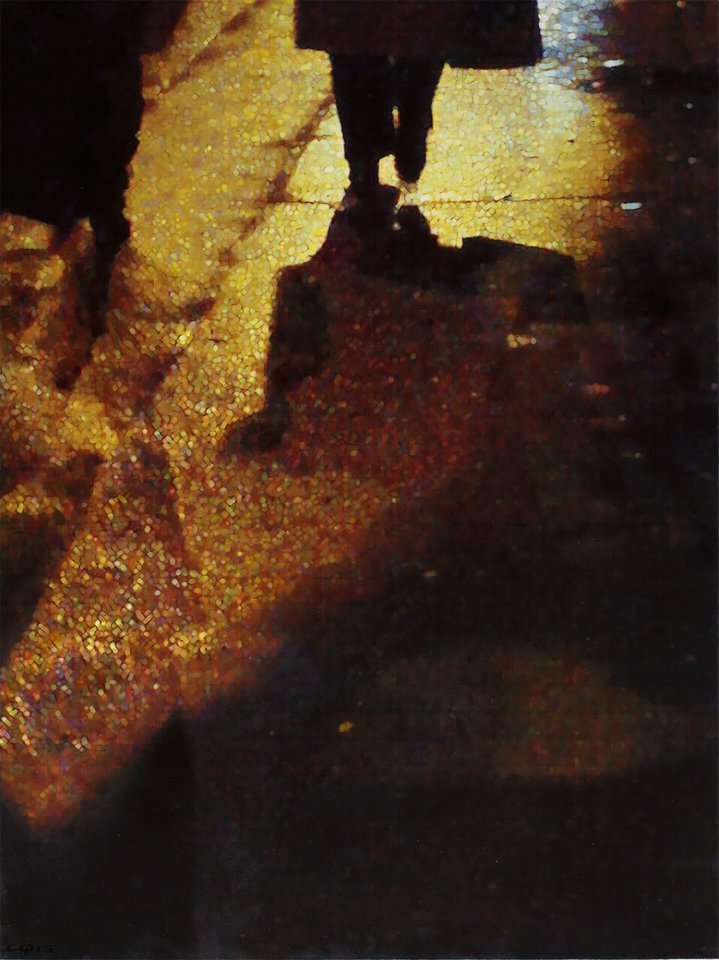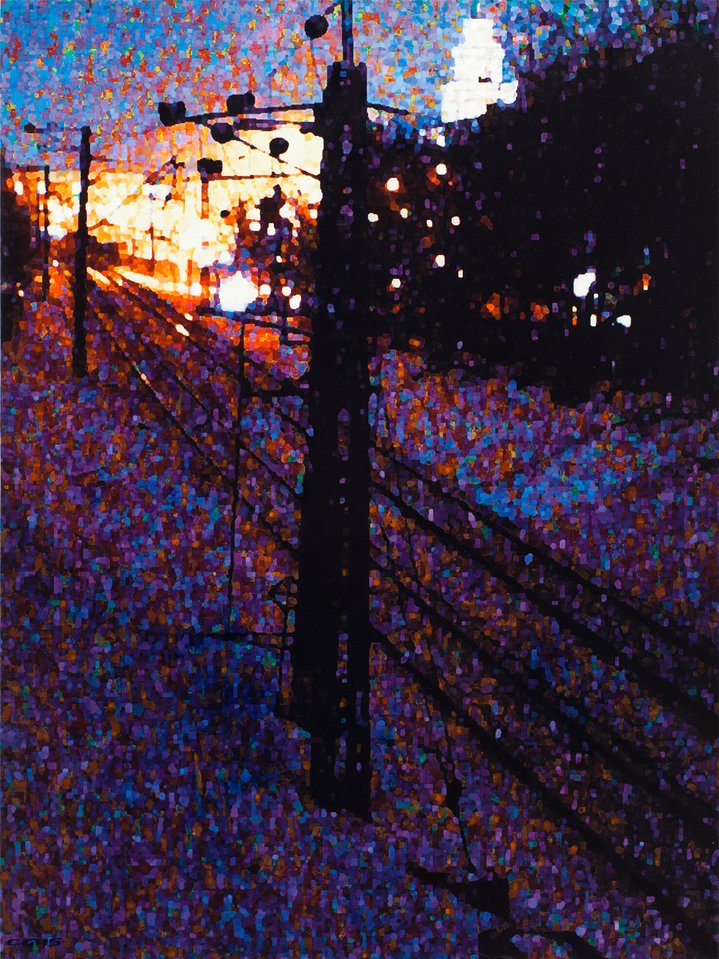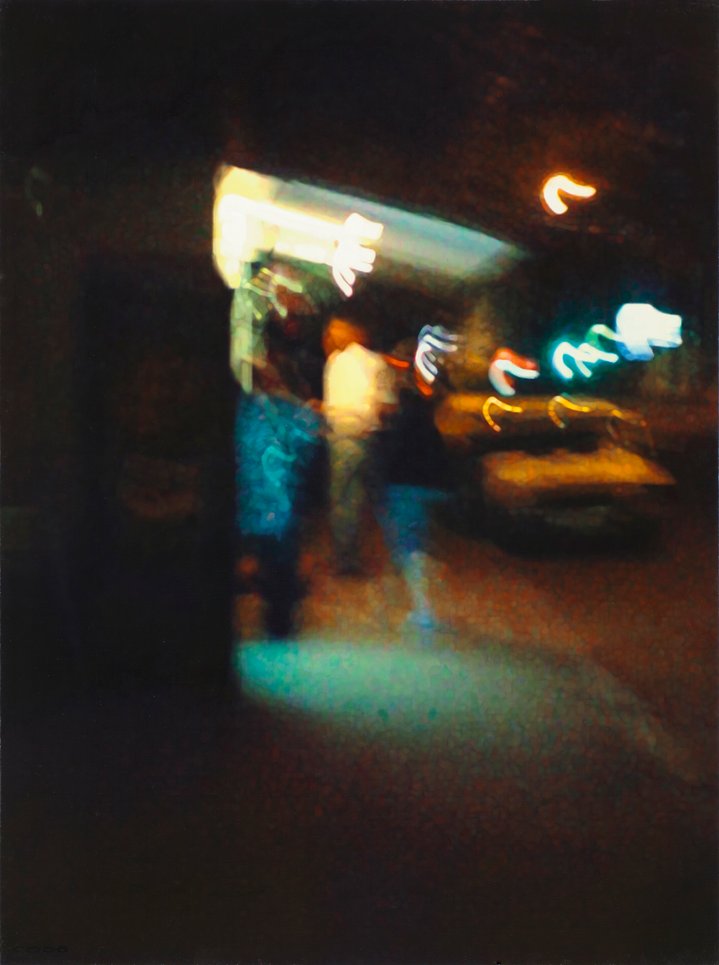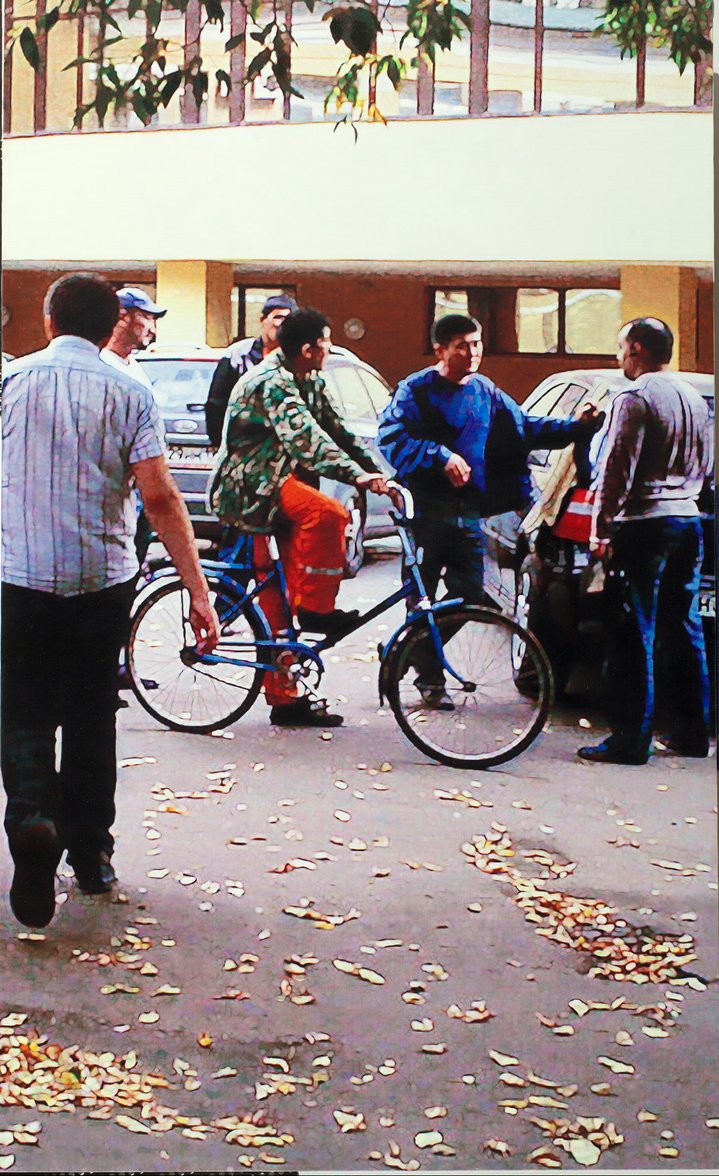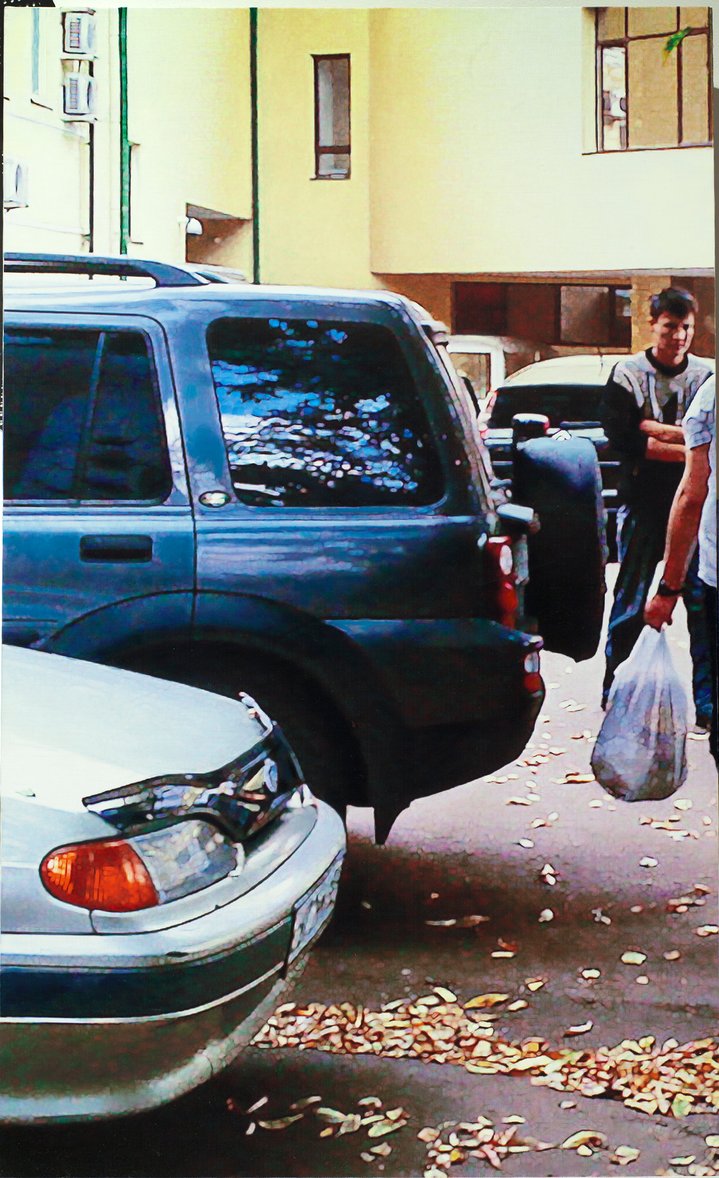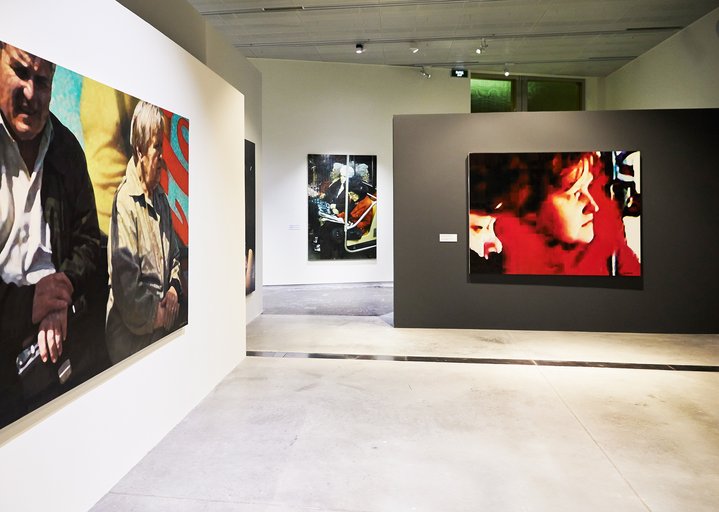Semyon Faibisovich. Double portrait from the 'Night Out' series, 2015. Canvas, oil, mixed technique. 105x205 cm
Semyon Faibisovich: From Russia to Israel with love
An artist known for inventing his own brew of photo-realism is saying goodbye to Russia with a big solo exhibition at the Jewish Museum and Tolerance Centre in Moscow.
To coincide with the unveiling of its newly expanded exhibition space, Moscow’s Jewish Museum and Tolerance Centre has opened a new solo show of works by Semyon Faibisovich (b. 1949). This septuagenarian classic of Russian art has been living in Israel since 2015. This is a goodbye story even in name because although the artist left Russia many years ago, he has still been exhibiting his work in museums and galleries. Now, he gives a clear signal that he is ending any professional relationship with his former homeland. In the light of recent events, it is unlikely that Faibisovich, who emigrated in the wake of the annexation of Crimea in 2014, will ever exhibit his work in Russia again, at least for the foreseeable future.
About fifty works in the exhibition ‘Razgulyai. Farewell’ have been loaned from several collections, including the Jewish Museum, Shalva Breus, Ekaterina and Vladimir Semenikhin, as well as works lent by the artist. In 2016, Faibisovich came back to Russia for several months to complete the series “Razgulyai at Night”, from which the current exhibition takes its name. This series is now being shown for the first time. The artist used a characteristic photorealistic style to record what was happening in and around the courtyard in Moscow where he used to live, yet he took it to an extreme, finding interest in the tiniest of nuances, in barely perceptible variations of the atmosphere. This is the most melancholic part of the exhibition: empty containers left by municipal workers (‘Plastic Bottle’, 2016); tinted glass reflecting the light of shop windows (‘Red Car-2’, 2015); cigarette stubs lying on the wet asphalt, enlarged so that the image is pixellated (‘Puddle’, 2015); the descent to an underground passage, which seems too large for the camera’s lens and the canvas (‘Night, Stairs, Lantern’, 2014). This cycle of works was made by the artist with a bitter realisation that he would be leaving his beloved neighbourhood.
However, this is not just about Razgulyai Square. As Danila Bulatov, chief curator of the Jewish Museum, said at the opening ceremony, it is wrong to exhibit this series “bypassing the continuing evolution of the artist's relationship with the city”. For this reason the exhibition includes works from the 1990s and 2000s as well as more recent compositions including the ‘New world’ series created in Israel. Thus ‘Excursion’ (2020) and ‘Sunset in Eilat Street’ (2020), located in the same corner, represent the same ‘Night Scenes’ in terms of style and approach, only they are much more positive, of course the climate there is sunnier. These latter works are simply printed on canvas. Faibisovich has been slowly moving away from traditional painting. Back in the mid 2010s, he was applying paint to prints, and now he has found a final release from the old medium. In the mid 1990s, the artist abandoned painting for over a decade, so he may yet return again.
The exhibition has been enhanced by the architecture of the layout which seems like a labyrinth of fake walls apparently placed at random. But first impressions are deceptive. Visitors pass through each of these random spaces and from some angles, through the passageways, you can see paintings hung in adjacent spaces. This creates an unexpected rhyme made by works from different cycles. You see workers walking to work (‘Chernyshevsky Street’, 1991), from around the corner you see a passenger in a trolley bus with an absent minded look (‘Devout woman-2’, 2008). Men in suits are riding on the New York subway (‘Rush Hour’, 1990), and beside them are two homeless people with swollen faces in the Moscow underground (‘Almost an icon’, 2010).
The layout of the exhibition leads intentionally or otherwise to parallels echoed in the juxtapositions which Faibisovich himself draws in almost every work. In simple scenes of everyday life, shot on public transport, he attempts to feel and convey to the viewer an almost Renaissance pathos: everybody, even the most self-neglecting beggar, is like a god, and the surrounding reality, despite its extreme untidiness, still remains a gleam of a heavenly world. Is the artist an optimist? Not really, it seems. But in the tragedies and sorrows of his characters he sees not only suffering but also purification, redemption and grace. The universe is not what it seems, the main thing is to look closely.
Semyon Faibisovich. Razgulyai, Farewell
Jewish Museum and Tolerance Centre
Moscow, Russia
June 21 – September 23, 2022






